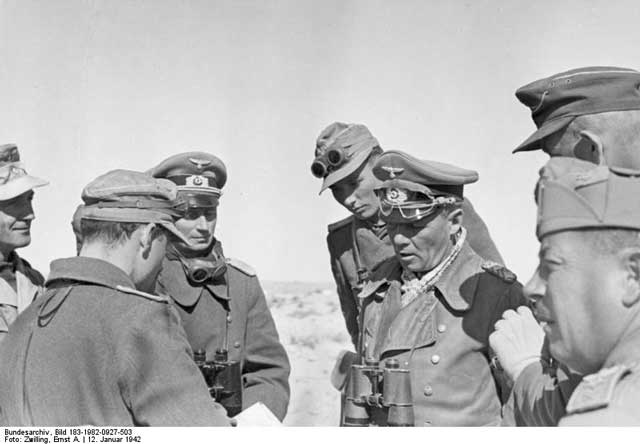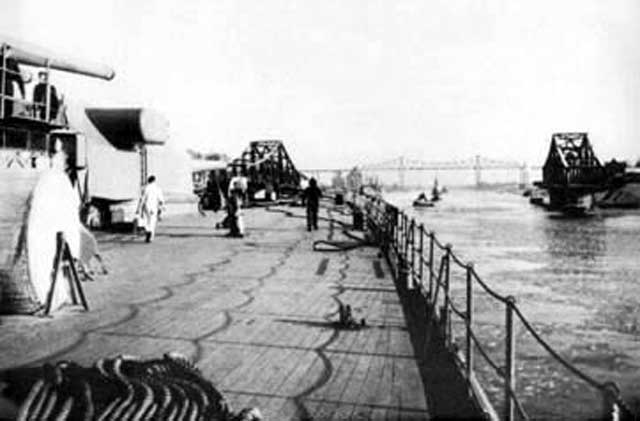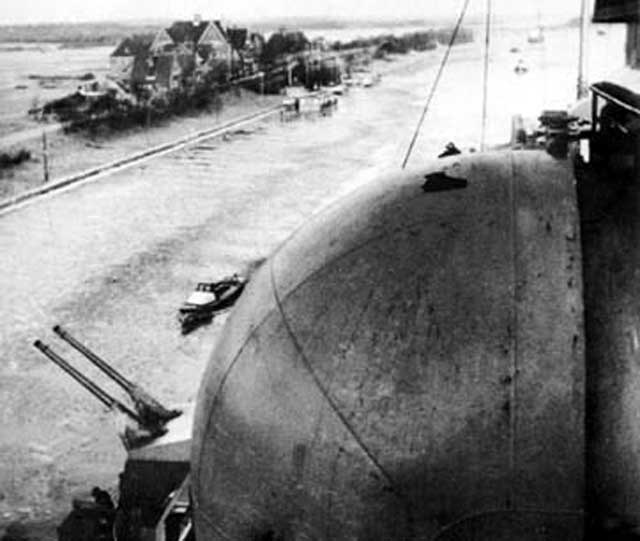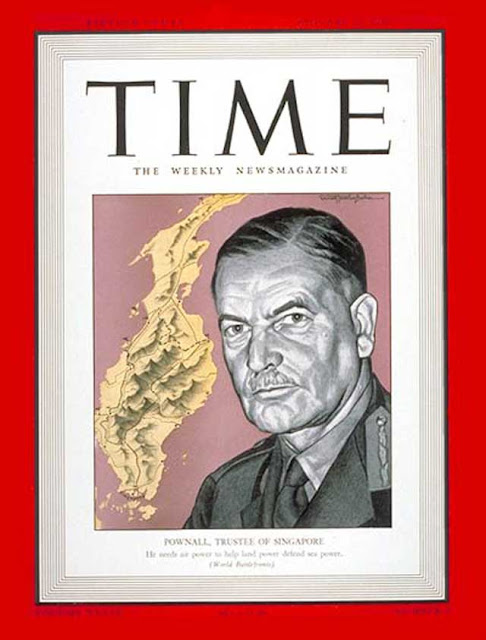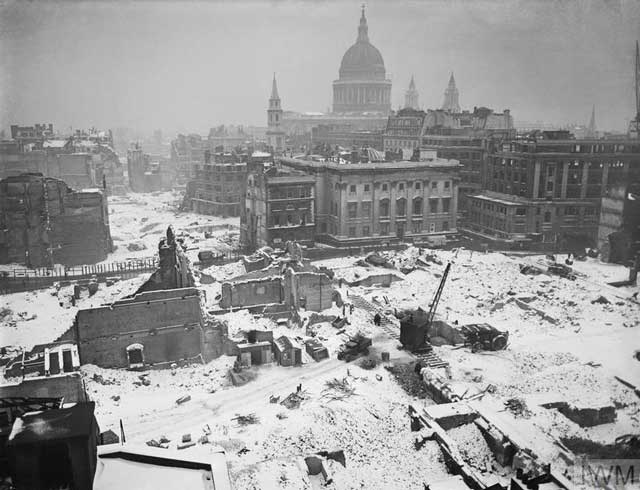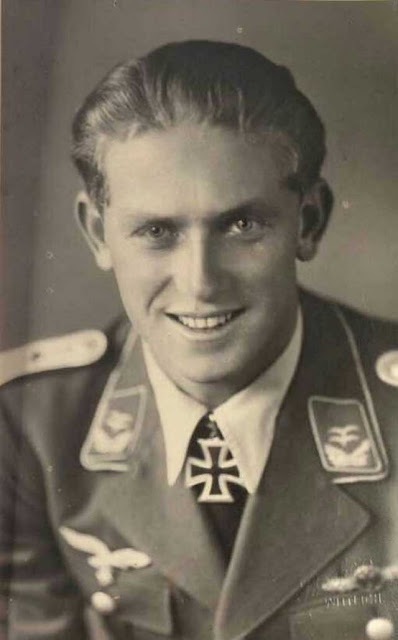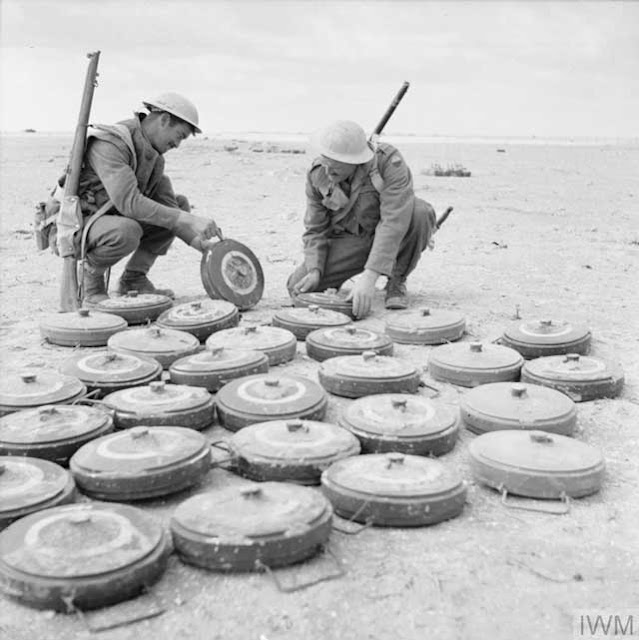Tuesday 17 March 1942
 |
| United States troops arrive in Australia, 17 March 1942. |
 |
| The NY Times edition that announced the return of General MacArthur notes optimistically in its headline that "Move hailed as foreshadowing turn of [the] tide." |
I know that every man and woman in the United States admires with me General MacArthur's determination to fight to the finish with his men in the Philippines. But I also know that every man and woman is in agreement that all important decisions must be made with a view toward the successful termination of the war. Knowing this, I am sure that every American, if faced individually with the question as to where General MacArthur could best serve his country, could come to only one answer.President Roosevelt quickly sends off a cable to Winston Churchill apprising him of the general's arrival in Australi with "a small staff." Roosevelt also instructs General Brett, the US commander in Australia, to propose MacArthur as the supreme commander in that region to Australian Prime Minister Curtin. This offer is immediately accepted by PM Curtin, making MacArthur the overall commander of Allied forces in the southwest Pacific Ocean.
The United States officially takes responsibility for the strategic defense of the Pacific Theater of Operations. The British still have a presence there, of course, but the overwhelming power lies in the hands of the Americans and this is just an acceptance of the reality of the situation.
 |
| The Hattiesburg (Mississippi) American of 17 March 1942 notes the arrival of General MacArthur but also trumpets the series of tornadoes that have devastated many nearby states from 15-17 March 1942. |
US Navy submarine USS Grayback (SS-208, Lt. Cdr. W. A. Saunders) sinks 3291-ton Japanese collier Ishikari Maru six miles west of Port Lloyd, Chichi Jima, Bonin Islands. There is no indication of casualties.
US Navy submarine USS Permit is damaged by depth charges off Tayabas Bay, Luzon, but remains on patrol.
Eastern Front: Operation Raubtier, the German attempt to encircle Soviet forces that have advanced across the Volkhov River, continues to make slow but steady progress. The Germans in the north are coming very close to one of the two Soviet supply roads, codenamed "Erika." If they take it, the Soviets will have only one other supply road, codenamed "Dora," for their two armies operating to the west.
European Air Operations: A prolonged lull in major RAF operations continues. A lone Wellington bomber is sent to Essen but, due to clouds that prevent accurate navigation, drops its bombs in the Ruhr River.
 |
| Tanker San Demetrio, sunk on 17 March 1942. |
U-404 (Kptlt. Otto von Bülow), on its second patrol out of Lorient, torpedoes and sinks 8073-ton British tanker San Demetrio. The tanker is traveling independently northwest of Cape Charles, Virginia. There are 19 dead, and the 34 survivors spend two days in lifeboats before being picked up by passing American freighter Beta. The master, Conrad Vidot, receives the Lloyds War Medal for Bravery at sea. This is another in a series of devastating tanker losses for the Allies in early 1942 which are causing concern in Washington and London.
 |
| British freighter Allende, sunk on 17 March 1942 off the coast of Africa. |
U-71 (K.Kapt. Walter Flachsenberg) is operating about 450 miles southeast of Philadephia, Pennsylvania when it puts two torpedoes into 6355-ton Norwegian tanker Ranja at 18:58. The ship catches fire and develops a list but does not sink and even continues to make headway, so Flachsenberg puts another torpedo into it at 19:54. That does the trick and the tanker becomes a blazing wreck that soon sinks. There are 34 deaths.
 |
| Norwegian tanker Ranja, sunk on 17 March 1942. |
Royal Navy 630-ton rescue tug HMS Adept runs aground at Paterson's Rock near Sanda Island, Scotland, in thick fog. The sea batters the tug before it can be refloated and it is written off. There is no indication of any casualties.
British 3738-ton freighter Clare Lilley runs aground at Portuguese Cover, Halifax Harbor, and is lost. There are five deaths, and the rest of the crew is saved only due to heroic efforts by locals residents. The Clare Lilley's cargo of munitions remains a local hazard until the present day, though much of it was removed in the 1970s.
 |
| Italian submarine Guglielmotti, sunk on 17 March 1942. |
U-83 (Kptlt. Hans-Werner Kraus) torpedoes and badly damages 2590-ton British tanker Crista between Alexandria and Tobruk. There are seven deaths, but the ship does not sink. A British motor torpedo boat (MTB 266) finds it abandoned and anchors it off Bardia, Libya. It is then towed back to Alexandria, arriving on the 28th. Crista is put back into service after repairs in 1944.
Royal Navy carrier-based aircraft attack 1778-ton German freighter Achaia and send it on a frantic attempt to escape. This causes the ship to blunder into a minefield, which does sink her about 25 miles east of Tripoli, Libya. There is no record of casualties.
Heavy Axis bombing of Malta resumes after a day of rest. Numerous bombs are dropped, particularly on favored targets Luqa and Grand Harbour. There are 30 civilian deaths recorded and one Spitfire is lost, along with several planes damaged on the ground. All told, the Luftwaffe drops 79,000 kg of high explosives today on the island.
 |
| Funeral of a United States seaman on 17 March 1942 in Gillingham Cemetery, Kent. "US Marines and US Seamen standing at the salute at the graveside." © IWM (A 7813). |
US Military: Vice Admiral Robert L. Ghormley establishes his new United States Naval Forces Europe command. This will plan joint operations with the Royal Navy. Ghormley, former commander of the USS Nevada and Assistant Chief of Naval Operations, has been President Roosevelt's Special Naval Observer in the United Kingdom since August 1940. While Ghormley has a fancy new title, his European command actually only encompasses a very few ships, at least one of which the British have "lent" the US Navy (USS Impulse, formerly the British corvette HMS Begonia, commissioned into the US Navy on 16 March 1942 at the Albert Dock.).
The US Army Air Force 9th Pursuit Squadron arrives at Darwin, Northern Territory, equipped with P-40Es. The port city has been under regular Japanese air raids and today, of course, is when General MacArthur arrives there from the Philippines.
The Germans take great pains to conceal the camp's true purpose by creating two separate zones, or camps that are completely screened from each other. These are smaller gas chambers than are used later, made of planks and insulated with sand and rubber. It takes time to perfect the extermination process, with many rooms not functioning properly, and this quickly creates a massive backlog of thousands of people awaiting execution with more arriving daily by train. New gas chambers of brick and mortar are soon built as a result of the lessons learned from this early process. There is little time to waste, as today the Germans send the first transport trains of Jews from the cities of Lublin and Lwów (Lviv) to Belzec.
In Ilja, north of Minsk, USSR, the SS rounds up and liquidates 900 Jews. The incident is notable because the victims attempted collective resistance, but it failed.
In Kovno, 24 Jewish residents are found outside the ghetto buying food from local Lithuanians. Such "escapes" are strictly forbidden, and all 24 men are shot by the Gestapo.
 |
| The first United States wartime draft lottery takes place on 17 March 1942. |
American Homefront: The Wartime Civil Control Administration of the Western Defense Command and Fourth Army announce two new steps to speed up the "voluntary" evacuation of alien and American-born Japanese from the Pacific Coast military area. These include the opening of new services centers in 64 communities in the three Pacific Coast states and Arizona. In addition, the Farm Security Administration announces a plan for continuing full production on agricultural lands to be evacuated by the departing internees.
Future History: John Wayne Gacy is born in Chicago Illinois. He becomes involved with the Illinois Democratic Party in 1960, becoming an assistant precinct captain. He then engages in a series of odd jobs, including that of a mortuary attendant. During the 1960s, Gacy is believed to have begun sexually assaulting minor boys, and for one incident he is convicted and serves time in the Anamosa State Penitentiary. During the 1970s, Gacy's sexual violence escalates and he begins a string of murders, again of minor boys. He performs at events as ""Pogo the Clown" or "Patches the Clown," which enables him to disarm his victims into thinking he is safe. Gacy is arrested on 21 December 1978 and convicted of sodomy of a teenage boy in Iowa in 1968, serves his time, and returns to Illinois. He then continues his string of murders, which leads in 1980 to convictions of 33 counts of murder. After spending 14 years on death row, John Wayne Gacy is executed by lethal injection on 10 May 1994.
 |
| The 17 March 1942 Decatur (Illinois) Daily Review features scenes of devastation from the series of hurricanes that hit the southern half of the United States in mid-March 1942. |
March 1942
March 1, 1942: Second Battle of Java Sea
March 2, 1942: Huge Allied Shipping Losses at Java
March 3, 1942: Japan Raids Western Australia
March 4, 1942: Second Raid On Hawaii
March 5, 1942: Japan Takes Batavia
March 6, 1942: Churchill Assaults Free Speech
March 7, 1942: British Defeat in Burma
March 8, 1942: Rangoon Falls to Japan
March 9, 1942: Japanese Conquest of Dutch East Indies
March 10, 1942:US Navy attacks Japanese Landings at Lae
March 11, 1942: Warren Buffett's First Stock Trade
March 12, 1942: Japan Takes Java
March 13, 1942: Soviets Attack In Crimea Again
March 14, 1942: The US Leans Toward Europe
March 15, 1942: Operation Raubtier Begins
March 16, 1942: General MacArthur Gets His Ride
March 17, 1942: MacArthur Arrives in Australia
March 18, 1942: Japan Attacks In Burma
March 19, 1942: Soviets Encircled on the Volkhov
March 20, 1942: "I Shall Return," Says MacArthur
March 21, 1942: Germans Attack Toward Demyansk
March 22, 1942: Second Battle of Sirte
March 23, 1942: Hitler's Insecurity Builds
March 24, 1942: Bataan Bombarded
March 25, 1942: Chinese Under Pressure in Burma
March 26, 1942: Win Or Die, Vows MacArthur
March 27, 1942: The Battle of Suusari
March 28, 1942: The St. Nazaire Commando Raid
March 29, 1942: The Free Republic of Nias
March 30, 1942: Japanese-Americans Off Bainbridge Island
March 31, 1942: Japanese Seize Christmas Island
2020













